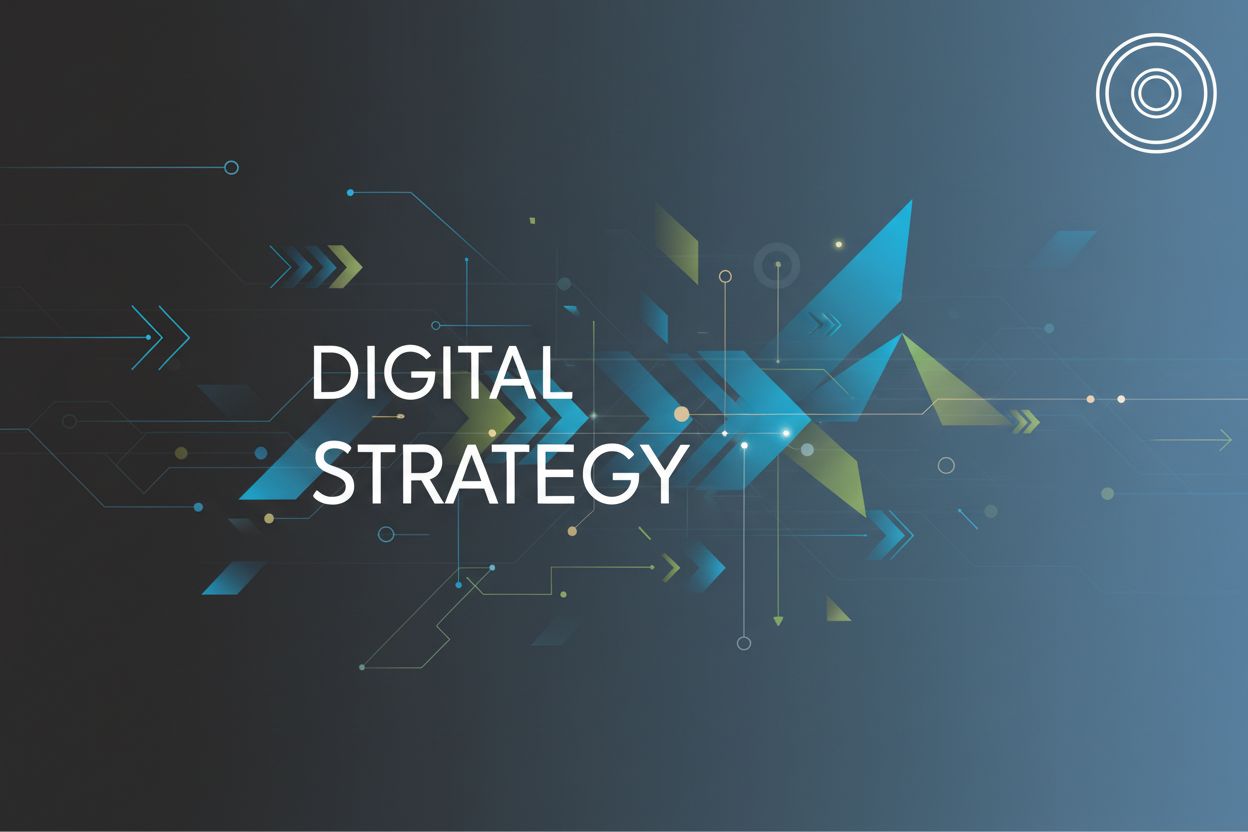Blog: Exploring Digital Marketing Strategy Frameworks
TL;DR
Understanding Digital Marketing Strategy Frameworks
Alright, so you're trying to figure out this whole digital marketing strategy thing, huh? It can feel like trying to assemble Ikea furniture without the instructions, trust me, i've been there.
Basically, a digital marketing strategy framework is just a structured way to plan and actually do your marketing stuff online. Think of it as a roadmap. It tells you where you want to go and how to get there, without just throwing spaghetti at the wall and hoping something sticks. Silverback Strategies puts it this way, a digital marketing strategy framework outlines the flow of your marketing process. Digital Marketing Strategy Frameworks
- It's a roadmap for achieving specific marketing goals. Like, "I want to get more leads" or "I want people to actually know my brand exists."
- It helps simplify those complex processes into manageable steps, so your team isn't running around like chickens with their heads cut off. Without a framework, you risk wasted resources on ineffective tactics, missing out on key opportunities, and struggling to measure any real results.
- And it ain't just for big corporations, either. Even your local bakery can benefit from having a plan.
Honestly, without a framework, you're just kinda winging it. And while that can work sometimes, it's way more efficient to have a plan. Frameworks provide clarity and direction for marketing teams, helping to improve task prioritization, resource allocation, and the measurement and optimization of marketing activities. Furthermore, they align marketing efforts more effectively with overall business objectives. (The 9 Best Marketing Frameworks You Need to Know - HubSpot Blog, Turn chaos into calm with these 7 prioritization frameworks - Nulab)
Keep in mind, there's no one-size-fits-all here. What works for a fintech startup ain't gonna be the same as what works for a healthcare provider.
For example, a retail business might focus on social media engagement and targeted ads, while a healthcare provider might prioritize content marketing and SEO to build trust.
Choosing the right framework is key, but don't be afraid to tweak it to fit your unique needs, you know? But it can help you keep everything on track, and make sure your marketing dollars are actually doing something.
Now that we've established the importance of frameworks, let's explore some popular ones and see how they work in practice.
Popular Digital Marketing Strategy Frameworks
Okay, so you're probably thinking, "Another framework? Seriously?" I get it. But hear me out – these are actually useful, not just some consultant buzzword bingo.
The RACE framework is all about growth, plain and simple. It's a customer-centric approach that focuses on growing customer engagement across four key stages: Reach, Act, Convert, and Engage. RACE planning framework
- Reach: Forget shouting into the void. This is where you're expanding brand awareness and pulling in new folks. Think SEO, social media, and maybe a little advertising to get the ball rolling.
- For instance, a local bookstore could start a blog with articles about authors or book reviews to attract readers through search engines. Or maybe they host a local author meet-and-greet to attract new customers and raise brand awareness.
- Act: Now you've got their attention, you need to keep it. This is about encouraging interaction and engagement with your brand. Get 'em clicking, commenting, signing up—anything to move them down the funnel.
- A financial services company might offer a free webinar on retirement planning, encouraging sign-ups and interaction.
- Convert: This is where the magic happens: turning prospects into paying customers. Free trials, discounts, compelling calls-to-action – whatever it takes to seal the deal.
- Imagine an e-commerce store sending out a targeted email campaign with a discount code for first-time buyers who've abandoned their shopping carts.
- Engage: Don't ghost your customers after they buy! This is about fostering customer loyalty and repeat purchases. Keep 'em happy, and they'll keep coming back.
- A subscription box service might create a loyalty program with exclusive perks and discounts for long-term subscribers.
SOSTAC is a planning framework that involves six key elements: Situation, Objectives, Strategy, Tactics, Actions, and Control. The SOSTAC Model It's like a comprehensive checklist for your entire marketing plan.
- Situation Analysis: Gotta know where you are to know where you're going, right? This is all about understanding your current market position, doing a SWOT analysis, and figuring out what's what.
- A restaurant might conduct a survey to understand customer satisfaction levels and identify areas for improvement, like service speed or menu options.
- Objectives: What do you want to achieve? These need to be specific, measurable, achievable, relevant, and time-bound (SMART). No vague wishes here!
- A software company might set a goal to increase its monthly recurring revenue by 15% within the next six months.
- Strategy: How are you going to get there? This is your overall approach, the big picture plan.
- A non-profit organization might decide to focus on content marketing and social media to raise awareness and drive donations.
- Tactics: The nitty-gritty details. These are the specific actions you'll take to implement your strategy.
- The non-profit might create a series of blog posts and infographics highlighting their impact and sharing them on social media.
- Actions: Time to get to work! This is where you actually execute your tactics, putting the plan into motion.
- The non-profit team schedules social media posts, writes blog articles, and monitors engagement.
- Control: Are you on track? This is about monitoring and evaluating performance, making sure you're hitting those objectives.
- The non-profit uses Google Analytics to track website traffic, social media engagement, and donation conversions.
Ah, the classic marketing funnel. Still relevant, even in this day and age. It's all about understanding the customer's journey from clueless to customer: Awareness, Interest, Desire, and Action (AIDA). Marketing funnel framework
- Awareness: Making people aware of your product or service. This is where you grab their attention, often through advertising or social media.
- A new coffee shop might run targeted ads on Instagram to reach local coffee lovers.
- Interest: Once they're aware, you need to pique their interest. Provide valuable information, show them what you're all about.
- The coffee shop creates engaging content on their Instagram page, showcasing their unique coffee blends and highlighting customer reviews.
- Desire: Now, you need to turn that interest into a desire. Show them how your product or service will solve their problems and make their lives better.
- The coffee shop offers a limited-time promotion, like a free pastry with any specialty coffee purchase, creating a sense of urgency and desire.
- Action: Time for them to take the plunge! Make it easy for them to buy, sign up, or whatever action you want them to take.
- The coffee shop makes it easy to order online or through a mobile app, offering convenient options for busy customers.
This one's a bit different, focusing on the customer's journey from awareness to advocacy. The 5 A's are Aware, Appeal, Ask, Act, and Advocate.
- Aware: Customers become aware of the brand, usually through marketing or word-of-mouth.
- A new fitness app might get featured in a tech blog, raising awareness among potential users.
- Appeal: The brand appeals to the customer, grabbing their attention and sparking interest.
- The fitness app's sleek design and focus on personalized workouts appeal to tech-savvy individuals.
- Ask: Customers actively seek information, initiating the process of gathering details and exploring options. This is the point where they start asking questions, either directly or by searching.
- Potential users read reviews and compare the app's features with other fitness apps.
- Act: Customers purchase the product, taking the plunge and giving it a try.
- Users download the fitness app and start their free trial.
- Advocate: Customers become loyal advocates, recommending the brand to others.
- Satisfied users share their workout progress on social media and recommend the app to their friends.
Porter's Five Forces is a totally different beast. It's not about marketing tactics, but about analyzing the competitive landscape. It helps you understand the power dynamics in your industry and how they affect your profitability. Porter’s Five Forces. Understanding these forces can help you identify opportunities for differentiation in your digital marketing, target specific customer segments more effectively, and anticipate competitive responses to your online campaigns.
- Threat of New Entrants: How easy is it for new competitors to jump into the market? High barriers to entry mean less competition.
- The pharmaceutical industry, with its high R&D costs and regulatory hurdles, has a relatively low threat of new entrants.
- Bargaining Power of Suppliers: How much leverage do your suppliers have? If they're the only game in town, they can squeeze your margins.
- A small craft brewery that relies on a single supplier for a rare type of hops might have limited bargaining power.
- Bargaining Power of Buyers: How much power do your customers have? Can they easily switch to a competitor?
- In the airline industry, customers have a lot of power due to the availability of many airlines and price comparison websites.
- Threat of Substitute Products or Services: Are there readily available alternatives to what you offer?
- Streaming music services face a threat from other forms of entertainment, like podcasts, video games, or live events.
- Rivalry Among Existing Competitors: How intense is the competition in your industry? A crowded market means more price wars and marketing battles.
- The fast-food industry is highly competitive, with numerous chains vying for customers' attention and loyalty.
This framework dives into how consumers make decisions, focusing on the touchpoints and experiences that shape their choices. It's not a linear funnel, but a circular journey with stages like Trigger, Initial Consideration Set, Active Evaluation, Moment of Purchase, and Post-Purchase Experience.
- Trigger: The moment a consumer realizes they need or want something.
- Seeing an ad for a new electric car might trigger a consumer to start thinking about upgrading their vehicle.
- Initial Consideration Set: The brands that immediately come to mind when the need arises.
- When thinking about buying a new laptop, a consumer might immediately consider Apple and Dell.
- Active Evaluation: Researching and comparing options, reading reviews, and seeking recommendations. This is where customers dive deep into specific product features and benefits.
- The consumer reads reviews on tech websites, compares specs, and asks friends for recommendations on laptops.
- Moment of Purchase: Making the final decision and buying the product.
- The consumer decides to purchase a MacBook Pro from the Apple Store.
- Post-Purchase Experience: The ongoing relationship with the brand, including customer service, product usage, and potential loyalty loop.
- The consumer enjoys the MacBook Pro, receives helpful customer support, and becomes a loyal Apple customer, likely to purchase future products.
Those are just a few of the frameworks out there. They're not magic bullets, but they can give you a solid foundation for planning your digital marketing efforts.
Now that we've explored some popular frameworks, let's dig into how to actually implement them in your own business.
Implementing and Tailoring Frameworks
Alright, so you've got your framework picked out. Now what? It's not like these things magically implement themselves, right? Let's talk about actually putting these plans into action – and bending them 'til they fit your situation.
First things first, know thyself (and thy business). A proper situational analysis is key. Think SWOT (Strengths, Weaknesses, Opportunities, Threats), or maybe even PESTLE (Political, Economic, Social, Technological, Legal, Environmental) if you're feeling fancy.
- Don't skip the SWOT analysis. Seriously. A healthcare provider, for example, might find their strength is trusted patient relationships, but a weakness could be outdated tech. Opportunities might lie in telehealth expansion, but threats loom from changing regulations.
- Next, get SMART. Objectives need to be Specific, Measurable, Achievable, Relevant, and Time-bound. "Increase brand awareness" is not a SMART objective. "Increase website traffic by 20% in Q3" – now we're talking.
- Select the framework(s) that best align with your business needs. As we've seen, frameworks like RACE offer a structured approach to customer engagement across key stages.
- Implement, obviously. Deploy that strategy across your chosen channels. Don't just set it and forget it, though.
- Keep an eye on things! Monitor your progress. Are you hitting those SMART objectives? If not, time to tweak the sails.
Okay, canned frameworks are fine, but what if your business is, like, totally unique? Newsflash: it is! So, adjust accordingly.
- Understand your unique quirks. A fintech startup's needs are wildly different from a traditional retail chain. Tailor, tailor, tailor!
- Don't be afraid to Frankenstein it. Integrate multiple frameworks. As Silverback Strategies notes, the SOSTAC and RACE models can be combined for a comprehensive approach.
- Data is your friend. Constantly refine your strategy based on what the numbers are telling you. If something ain't working, ditch it.
It's all about finding that sweet spot where the framework gives you structure, but you're still flexible enough to adapt to the ever-changing digital landscape.
Conclusion: Choosing the Right Framework for Success
Okay, so you've been diving into the world of digital marketing strategy frameworks – it can feel like a whole new language, right? But don't worry; getting your head around it is totally doable. Let's wrap things up and make sure you're ready to pick the right framework and actually use it.
- Digital marketing strategy frameworks provide structure and clarity. They're not just buzzwords, but a way to organize your thoughts, resources, and actions, so it’s not just a shot in the dark. Frameworks offer clarity and direction for marketing teams.
- Think of it like this: If you're building a house, you need a blueprint. A framework is your blueprint for digital marketing. Without it, you're just kinda piling bricks on top of each other.
- Selecting the right framework depends on your specific goals and business needs. What works for a tech startup isn't gonna work for a local bakery, and vice versa. You kinda have to pick what fits.
- For example, a non-profit focused on raising awareness might lean heavily on social media and content marketing, while an e-commerce business laser-focuses on conversion rates and the AIDA model.
- Continuous monitoring and optimization are essential for success. It's not a "set it and forget it" kinda thing, you know? You gotta keep an eye on things and tweak as needed.
- Let's say you're using the RACE framework, as previously mentioned. You might find that your "reach" efforts are working great, but your "conversion" rates are lagging. Time to adjust your tactics!
- Embrace a flexible and adaptable approach to digital marketing. The digital landscape is always changing, so you gotta be ready to roll with the punches.
- What's hot today might be old news tomorrow, so don't get too attached to any one strategy. Keep learning, keep experimenting, and keep adapting.
Think of a small business owner trying to use the AIDA model, also mentioned before. They might start by running Facebook ads to raise awareness, then create blog posts to build interest, offer a limited-time discount to create desire, and make it super easy to purchase with a clear call-to-action. But, if they don't track the results and adjust, they're just throwing money away. A digital marketing strategy framework is like a compass guiding you towards your marketing goals.
Alright, so hopefully this deep dive into digital marketing strategy frameworks has been useful. Remember, it's not about finding the perfect framework, but about finding the one that works for you and your business. And don't be afraid to get a little messy and experimental along the way – that's how the magic happens.




